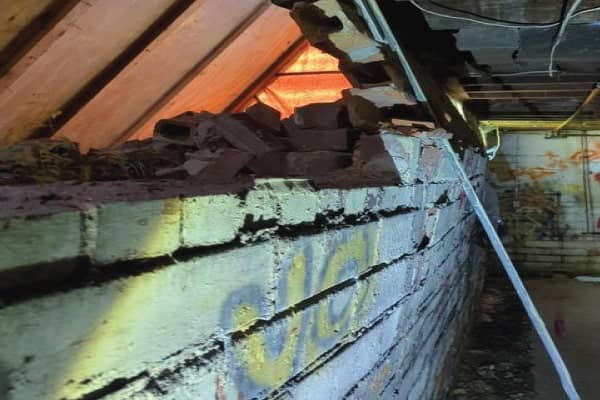Everything about Best Basement Waterproofing
Everything about Best Basement Waterproofing
Blog Article
The Main Principles Of Best Basement Waterproofing
Table of ContentsThe Single Strategy To Use For Best Basement WaterproofingRumored Buzz on Best Basement WaterproofingEverything about Best Basement WaterproofingSome Known Facts About Best Basement Waterproofing.The Best Strategy To Use For Best Basement Waterproofing
AdvantaClean's trained experts and specialists will situate the water source. If wall surface or piece cracks are present, we will certainly inject polyurethane and epoxies right into the cracks and seal the compromise, avoiding additional moisture from going into.If there's condensation on the outside of the foil, you have high moisture in your cellar. If the foil has condensation on the within surface (following to the wall surface), the soil around your house may be normally damp from a high water table or bad dirt water drainage.
You can waterproof simply your indoor walls, which may fix the issue. Or you can waterproof your outside wall surfaces, which is a better wager however more expensive. Here's the scoop on the different kinds: These thick finishes are cement-like. Once they dry, they adhere permanently to concrete and masonry walls (Best Basement Waterproofing).
A Biased View of Best Basement Waterproofing
Concrete water resistant layers can't be applied to formerly painted surfaces; inspect the tag. Recognized as densifiers, they are ideal only for walls that have not been painted or sealed.
Yet you clean, roll, or spray it on far more thickly one gallon covers simply 75 square feet, not the 300 square feet typical with typical paint. Water-proof paint is great for do it yourself application. You can use it over repainted surfaces, and paint over it once it's cured (one gallon prices $37).
It can cost $10,000 to $15,000, depending upon the job required. Exterior waterproofing involves excavating throughout your house fully deepness of the structure wall surfaces, then setting up a water resistant layer or membrane layer covered by water drainage panels. The panels offer a simple path for water to flow to an outside French drain at the end of your foundation.
We have actually all been caught in a tornado without any umbrella or raincoat (Best Basement Waterproofing). And it's always a dish for calamity: whatever's wet, your coiffure is messed up, and points are getting moldy. A basement without waterproofing is type of like that. Minus the destroyed hairstyle component. Your basement doesn't want to go via a rainstorm without proper security just as much as you do not desire to.
Getting My Best Basement Waterproofing To Work
But if you have actually done your research study, you would certainly understand there are two kinds of waterproofing: interior and exterior. It can obtain puzzling what they both mean, which one's a better financial investment, and what will in fact maintain the water out. Do not fret, we placed with each other this blog site to conveniently define both techniques for you and discuss the advantages and disadvantages of each.
Outside waterproofing is a waterproofing approach that includes sealing your home from the outside. It's kind of like a moat around a castle. It includes digging a trench around your entire residence down important site to the structure (about 8 to 10 feet down). The structure walls are then cleaned up, sealed, and covered with a water resistant membrane or sealer.

See This Report on Best Basement Waterproofing
It's a much more engaged procedure that requires digging up your backyard, which is pricey and time-consuming. Exterior waterproofing includes eliminating every little thing bordering your house, including decks, driveways, pathways, landscaping, air conditioning units, decks, and more. If any one of the job was done improperly and water is still entering your cellar, there isn't much you can do to correct or fix it.
Interior cellar waterproofing includes waterproofing from the inside. Any kind of water that leakages into your basement look at this website is rerouted prior to it touches your floor. It's kind of like wearing a raincoat under your clothing. It involves two points: a water drainage track and a sump pump. It works by securing the within your basement wall surfaces and floors so water that tries to enter is transported out with a sump discover this pump.
It's an efficient technique to waterproof your cellar. The disadvantage of interior basement waterproofing mostly has to do with the installation procedure.
Best Basement Waterproofing Fundamentals Explained
Finally, outside and indoor cellar waterproofing are both reliable techniques of shielding your home from water damages. Outside waterproofing produces a barrier that avoids water from entering your home, while indoor waterproofing redirects water that does enter your home. And it is necessary to note that exterior waterproofing is a costly and turbulent setup process when contrasted to interior waterproofing.
Whichever method you pick, make sure you pick a reliable and trustworthy contractor for the job. If you have any type of questions regarding basement waterproofing, please get to out to us.
You can submit our form right here, begin a chat in the lower right-hand corner, or call us at 1-800-827-0702.
Report this page